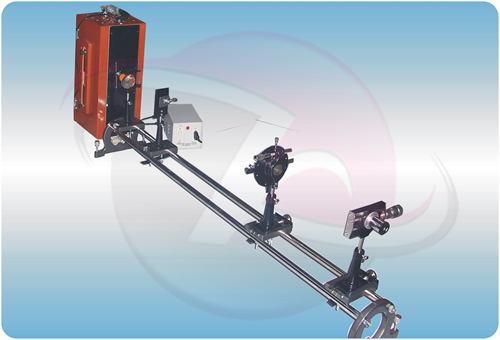Fresnel's Biprism Setup

Fresnel's Biprism Setup
Fresnel's biprism diffraction Apparatus is an instrument that demonstrates how Fresnel's Bi prism can be used to obtain fringes due to interference and to calculate the wavelength of monochromatic light. Bi-prism produces interference pattern from a single source due to the creation of two virtual coherent sources as the light passes through the prism.
The apparatus consists of an optical Bench on which components are mounted using posts, post holders and movable carriages. For setting up the experiment, the slit, eye piece and the biprism are adjusted so as to obtain well defined bright and dark fringes. Sodium vapour lamp is used as light source.
Fresnel's biprism consist of two prisms of very small angles joined base to base. In practice, a thin glass plate is taken and one of its faces is ground and polished till a prism is formed with an obtuse angle of about 179° and two side angles of the order 30 arc minutes. If a diverging beam of light strikes the edge of the biprism, two diverging coherent light beams are created which appear to emerge from two virtual slits and interfere on the far side of the biprism. Students gain knowledge of the general setup of the Fresnel experiment and the interference patterns. Research quality modules of the instrument can be used for project works as well.
Scope of Learning
Determination of the wavelength of the monochromatic light with the help of Fresnel Biprism Experiment Setup.
To find the wavelength of the sodium light using bi-prism diffraction experiment
